Konferencje
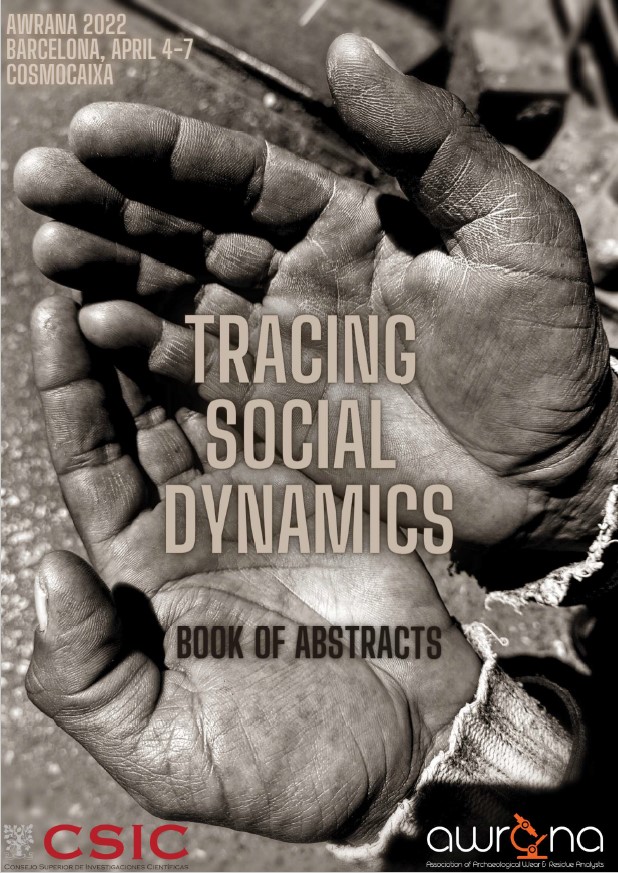
Kufel-Diakowska B. Chłoń M. Baron J.
The Neolithic polished stone tool as a Bronze Age funerary gift
AWRANA 2022 – Tracing Social Dynamics, Institución Milá y Fontanals de investigación en Humanidades (IMF), centro propio del Consejo Superior de Investigaciones Científicas (CSIC) en Cataluña, 4-7 kwietnia 2022, Barcelona
Abstrakt
Excavations at the urnfield culture (in Central Europe ca. 1300-400 BC) cemetery in Miłosławice (SW Poland) yielded a rare example of the long lasting tool biography. From one of the burials (grave no 527) dated back to the late Bronze Age (ca. 900-700 BC), the Neolithic polished stone tool was retrieved. It was placed directly by a ceramic urn containing remains of an adult individual (582 grams) accompanied by animal bones (21 grams). The tool belongs to a category of shoe-last adzes – one of distinctive elements of stone tool-kit used by the groups of Linear Pottery culture (LBK). LBK people were first who introduced farming and husbandry in the area of Central European Lowlands ca. 5500 BC. Polished shoe-last adzes were most necessary tools used for preparing land for cultivation and for building houses. The shoe-last adze found in Miłosławice is made from Jizerské hory-type metabasite. As most of the shoe-last adzes from the Neolithic sites in SW Poland it was manufactured in the workshops located ca. 150 km south-west from the main settlement clusters and brought to the north-east as a tool ready to use. The tool is complete, what is rare in this area. However both ends – the cutting edge and the butt are heavily damaged as a result of prolonged and subsequent use, so is the ventral surface. The nature of the usewear traces indicates that the shoe-last adze was used by the people of the Stone Age, reused by the Bronze Age communities and finally intended for funeral purposes. Studies are supported by the National Science Centre (NCN), Poland, decision No: UMO-2020/38/E/HS3/00285.

Chłoń M. Kufel-Diakowska B. Borowski M.
Should we stay in touch? New insights into contacts between first farmer communities in Central Europe, based on macrolithic stone tools analysis
AWRANA 2022 – Tracing Social Dynamics, Institución Milá y Fontanals de investigación en Humanidades (IMF), centro propio del Consejo Superior de Investigaciones Científicas (CSIC) en Cataluña, 4-7 kwietnia 2022, Barcelona
Abstrakt
The appearance of first framer societies
associated with the Linear Pottery culture
(LBK) in Central Europe took place between
5500-4900 BC. The dynamic nature of the
spread of the LBK is the subject of many
research. Although it is considered that some
local Mesolithic societies were involved in
the process of the Neolithization, it is proved
that primary centres were located in the
south of Carpathian Mountains. The goal
of this study was to determine the nature
of contacts between southern cultural
centres and further north expansions.
Were the contacts still maintained after the
communities completed the initial phase
in the newly inhabited zones? Did the local
production of the necessary tool kit based
on the recognition of the local deposits of
raw material fulfil their needs? We were
hoping to answer this question by focusing
our research on the group of the macrolithic
stone tools, which were essential for
Neolithic people for food preparation and
other agricultural, construction and craft
activities. The artefacts for our project was
chosen from two well excavated LBK sites
from Lower Silesia (SW Poland): site no 16
in Strzelin and site no 1 in Skoroszowice.
The site in Strzelin represents a long term
settlement where traces of occupation of
three LBK culture phases were recorded.
Collection of 43 ground stone tools from
Strzelin 16 included adzes/hoes, querns,
grinding stones, handstones, tool preforms
and tool fragments. The site in Skoroszowice
was occupied during the third phase of LBK
culture. Collection of 18 ground stone tools
from Skoroszowice included: adzes/hoes;
querns; handstones and 2 tool fragments.
By studying raw material provenance,
technological and use wear traces on tools,
it became evident, that despite the passage
of the time contacts were maintained.

Bronowicki W.
The mystery of stone battle axes of the Corded Ware Culture: the complex biography of the axes from Budziszów Wielki 2/3, southwestern Poland
AWRANA 2022 – Tracing Social Dynamics, Institución Milá y Fontanals de investigación en Humanidades (IMF), centro propio del Consejo Superior de Investigaciones Científicas (CSIC) en Cataluña, 4-7 kwietnia 2022, Barcelona
Abstrakt
Battle axes are one of characteristic
artefacts of the Corded Ware Culture. They
were often made of serpentinite, a rock
which was obtained at the Ślęża Mountain
in the vicinity of Wroclaw in SW Poland.
Most of the axes in this region are stray
finds, without any context. Despite their
meaning as one of the most important
artefact of Corded Ware Culture, no
detailed research on their production and
use was performed. The Budziszów Wielki
2/3 site was discovered in central part of
Lower Silesia, southwestern Poland during
rescue research conducted by Institute
of Archaeology and Ethnology of Polish
Academy of Science, Wroclaw Branch, in 2008. In one of pits, presumably a grave
(although no skeletal remains were found),
researchers discovered an assemblage of
four battle axes made of different types
of raw material. One of the axes was also
found to be ornamented which is extremely
rare amongst Polish finds. The aim of my
research was to reconstruct complex
biographies of the axes in question, starting
from raw materials used through the way
of production and the use of the artefacts.
For this purpose I utilized technological
analysis and use wear analyses based on
macroscopic and microscopic studies of the
battle axes. My project was supported by a
programme of experimental research which
contained the production and use of battle
axes and the comparison of traces. Thanks
to this multidimensional approach I was
able to gain some fresh data on the way of
production and use of the battle axes. Due
to these results we can get more precise
knowledge of the technological skills of the
people of the Corded Ware Culture.

Bronowicki W. Chłoń M. Kufel-Diakowska B. Borowski M.
Hidden lithic treasures. Museum Collections of the Neolithic stone tools
28th EAA Annual Meeting, 31 sierpnia – 3 września 2022, Budapeszt
Abstrakt
In this paper we would like to present the result of studies on the collection of stray finds from SW Poland that consists
of the macro-lithic tools dating to the Neolithic. The group of objects (more than 350) includes mainly axes, adzes
and handstones made from various igneous, sedimentary and metamorphic rocks. Most of them became part of
museum collections thanks to donations from the local community and surface prospection conducted by German
archaeologist before WWII. Despite the undetermined context of the discovery, we consider them to be valuable
source of information on the mobility, contacts and life of the Neolithic societies.
We used a combination of generally available methods in our research. Starting with application of systematic classification
of macro-lithic tools, we were able to define cultural connections and chronological frames of the finds.
While some of the objects are well recognised in other archaeological contexts in this area, number of specimens
are represented only by stray finds. This is true mainly for a large group of the Eneolithic axes. The use of petrographic
analysis allowed us to identify the type of raw material, as well as, in some cases, local and distant rock outcrops. Finally,
the use of geographic information system (GIS) together with distribution of archaeological sites and settlement
traces, gave use opportunity to link particular finds with the recognized episodes of the occupation of the early farming
societies in the SW Poland. The studies are complemented by the technological and functional analysis based on
microscopic observations in case of well-preserved pieces.
The obtained results confirm our opinion about the necessity to conduct research on collections of stray finds. These
data complement the information gathered through excavations of the archaeological sites.
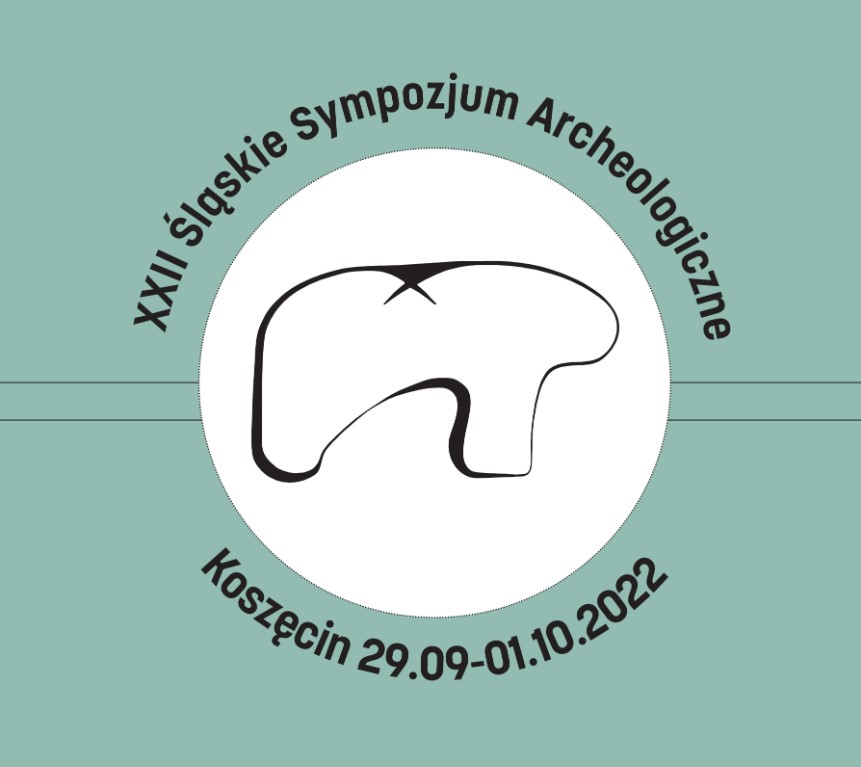
Kufel-Diakowska B. Chłoń M. Bronowicki W. Gawron-Szymczyk A. Borowski M.
Neolityczne narzędzia makrolityczne z południowo-zachodniej Polski. W ujęciu biograficznym
Śląskie Sympozjum Archeologiczne, Instytut Archeologii UWr., 29 września – 1 października 2022, Koszęcin
Abstrakt
Osadnictwo społeczeństw neolitycznych na Dolnym Śląsku było zmienne w czasie. Powszechnie uważa się,
że nowy model społeczeństw opartych na gospodarce rolniczo-hodowlanej był silnie związany z warunkami
naturalnymi środowiska (Kulczycka-Leciejwiczowa 1993; Furmanek et al. 2019). Jednym z licznych i zarazem
charakterystycznych świadectw pobytu ludności neolitycznej w dorzeczu Odry są kamienne narzędzia makrolityczne.
Do wspominanej kategorii zabytków archeologicznych zaliczyć można różnorodne formy narzędzi (np.:
siekiery, motyki, topory, żarna, rozcieracze, płyty szlifierskie) i wytworów (np.: zawieszki, paciorki) wykonanych
z różnego rodzaju skał (magmowych, osadowych i metamorficznych). Nie dziwić powinien zatem potencjalnie
szeroki zakres funkcji jakie pełniły narzędzia makrolityczne w społecznościach neolitycznych. Począwszy od
czynności związanych z budownictwem, rolnictwem, przetwarzaniem żywności, działaniami wojennymi były
one także nośnikami informacji symbolicznych lub społecznych. Niestety, dotychczasowo przedmioty te nie
doczekały się kompleksowego opracowania.
Widząc potencjał oraz złożoność zagadnienia, podjęliśmy się badań mających na celu wyjaśnienie sposobów
wytwarzania, użytkowania oraz utrzymywania neolitycznych narzędzi makrolitycznych w południowo-zachodniej
Polsce. Realizacja celów projektu jest możliwa dzięki zastosowaniu przez nas połączenia obserwacji
mikroskopowych z badaniami eksperymentalnymi, analizami petrograficznymi, badaniami pozostałości organicznych
(rezyduów, fitolitów, skrobi), tworzeniu modeli 3D wybranych zabytków oraz analiz przestrzennych
wykorzystujących systemy GIS.
W przygotowywanym wystąpieniu pragniemy podzielić się z Państwem najnowszymi wynikami badań. Obejmującymi
zbiory neolitycznych narzędzi makrolitycznych pochodzących z archiwalnych stanowisk archeologicznych
(m.in. Budziszów Wielki 2/3; Skoroszowice 1; Strzelin 16) oraz kolekcji powierzchniowych znalezisk
ze zbiorów muzealnych (m.in. Muzeum Piastów Śląskich w Brzegu; Muzeum Powiatowe w Nysie).
Praca powstała w wyniku realizacji projektu badawczego o nr 2020/38/E/HS3/00285 finansowanego ze
środków Narodowego Centrum Nauki.
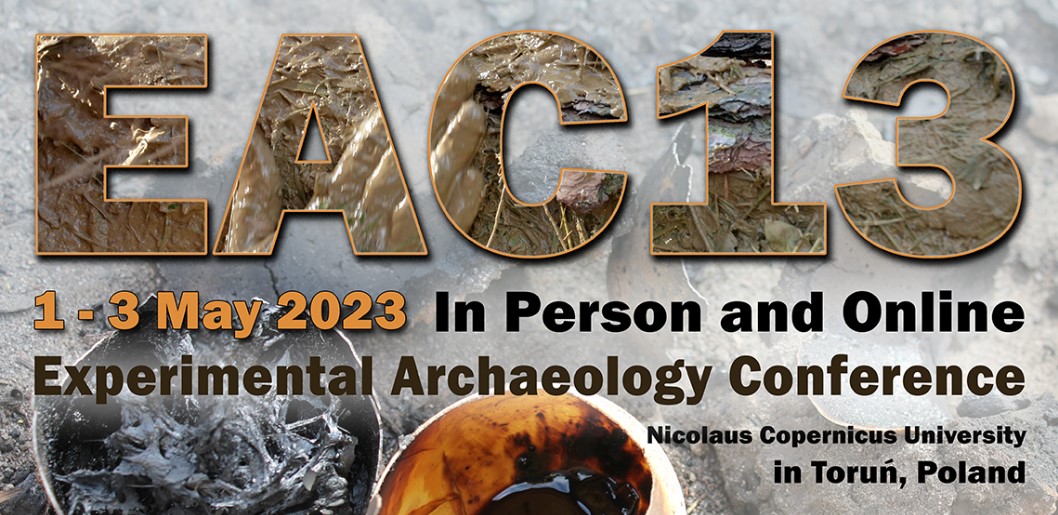
Kufel-Diakowska B. Chłoń M. Borowski M. Tichý R. Kučírek K. Drahorád M. Panáček A.
Production, use and maintenance of the Neolithic metabasite-made macrolithic tools
13th Experimental Archaeology Conference #EAC13, 30 kwietnia – 3 maja 2023, Toruń
Abstrakt
For the early farming societies macrolithic tools were essential part of the equipment used in day-to-day activities, such as agricultural practices, food preparation, construction works and making craft. Among the wide range of rock types, metabasites from the Bohemian Massif played a dominant role as a raw material for tool’s production in the Linear Pottery culture (LBK). It was used for making ground stone tools with a cutting edge. The high value of metabasite-made tools is evidenced by frequent finds from the Central European LBK contexts located at a great distance from the outcrops. However, the organization of the technological process, function and maintain of tools is poorly recognised. In our study we focus on the life cycle of the metabasite-made tools, that includes manufacturing, distribution, type of activities performed, methods of hafting, tool’s modifications, and repairs. We present results of the microscopic observations of 70 objects from the LBK sites in SW Poland (Strzelin 16, Skoroszowice 1 and Strachów 2/2a). The group of analysed tools includes shoe-last adzes, axes, hoes, chisels and handstones modified from adzes. Experimental works provided the reference collection for the interpretation of use-wear and production traces observed on the Neolithic tools.
Studies are supported by the National Science Centre (NCN), Poland, decision No: 2020/38/E/HS3/00285.

Bronowicki W. Płonka T. Chłoń M.
Set In Stone – Ornamentation of Stone Battle-Axes from the Experimental Perspective
13th Experimental Archaeology Conference #EAC13, 30 kwietnia – 3 maja, Toruń
Abstrakt
Stone processing is a heavy work even for the contemporary artists. However, the Neolithic communities mastered this difficult craft, the products of which have survived for centuries. Through careful examination, using various techniques we are able to collect information about the process of production of stone tools and reconstruct various phases in the chain of operations. In this paper we focus on the rarest and unique activity of this sequence – decoration.
We present the results of experimental and use-wear studies on the process of ornamentation of stone tools. The case studies are two engraved battle-axes of the Corded Ware culture from SW Poland. One of them was found in Budziszów Wielki 2/3 and was made of diabase; second one come from Kurzątkowice 7 and was made of serpentinite. Both of them are decorated with an arrangement of engraved lines that go around the surface of the artifacts. In order to replicate the process various experiments were prepared to provide reference collection for interpretations of techniques and tools used in ornamentation. This study is part of a project supported by the National Science Centre, Poland (2020/38/E/HS3/00285).

Gawron-Szymczyk A.
Phytoliths reference collection from the experimental perspective
13th Experimental Archaeology Conference #EAC13, 30 kwietnia – 3 maja 2023, Toruń
Abstrakt
Phytoliths, defined as plant opal silica bodies, are the most resistant botanical remains in archaeological contexts. They may be collected directly from soil deposits and archaeological artefacts, such as grinding tools. Phytoliths identification requires reference samples. They are taken from modern plants and prepared with the use of two different methods: dry ashing technique or treatment with chemical agents. However, available reference collections of phytoliths include narrow range of plant samples from Central Europe. Also, relatively little Neolithic plant macroremains are preserved from this area.
My study is a part of the research project focused on understanding the Neolithic agriculture, crop processing and diet and includes the analysis of microremains from grinding tools of the Linear Pottery culture (LBK) in SW Poland (ca. 5400-4900/4800BC). Firstly, I propose an alternative, experimental method of collecting reference samples of phytoliths directly from plants added as admixture to clay and preserved as the archaeobotanical macroscopic remains inside daub lumps. Before the process of sonication and chemical extraction the plant species of macroremains were macroscopically defined. Second part of my experimental project is aimed in understanding the cognitive value of phytolith studies collected from the Neolithic grinding tools excavated decades ago and to check the contamination possibility. For this reason, I check the possible presence of phytoliths on the polishing slabs and adzes excavated from the same Neolithic contexts.
This study is part of a project supported by the National Science Centre, Poland (2020/38/E/HS3/00285).

Borowski M. Kufel-Diakowska B. Chłoń M.
Procurement and circulation of lithic raw materials used for production of polished stone tools in Lower Silesia (SW Poland): some remarks on the state-of-the-art and new research perspectives
16. Mitteldeutscher Archäologentag, Der soziale Wert prähistorischer Beile: neue archäologische und archäometrische Ansätze (The social value of prehistoric axes: new archaeological and archaeometric approaches), 5-7 października 2023, Halle (Saale)
Abstrakt
The history of petrographic studies on raw materials used for production of Neolithic ground stone tools with edges in Lower Silesia can be dated back as early as the pre-World War II period. The topic has been further developed thanks to the long-standing cooperation of Polish archaeologists and geologists. Unfortunately, for two decades there has been a standstill in this research field in southwestern Poland. The recent results of similar studies from the neighbouring areas, in particular Bohemia, cast into doubt validity of some of the previous findings, especially those related to the Early Neolithic raw material acquisition strategies. The present research project allows us to reassess the credibility of previously published data. Apart from standard megascopic examination of artifacts and polarised light microscopy analysis of thin sections, several cutting-edge archaeometric techniques will be employed to shed new light on provenance issues. The earliest ground stone tools with edges known from Lower Silesia are Early Neolithic shoe-last adzes, attributed to the Linear Band Pottery culture (ca. 5600/5500–4800/4700 BC). As is the case of other regions of Central Europe, raw materials used for production of these implements were dominated by Jizerské hory-type metabasites originated from the Western Sudetes. Given that Lower Silesia is a geologically diverse area, offering a wide range of easily accesible rocks suitable for stone tool production, the extraordinarily broad distribution of metabasite adzes indicates that Early Neolithic procurement strategies were significantly affected by symbolic or socio-political factors. It was the societies of the younger Danubian Neolithic (ca. 4300–3600 BC) who initiated raw material diversification and put more attention to local resources. The implements produced from non-local metabasites were still present in the stone tool assortment, but their importance significantly decreased. Besides the Jizerské hory-type, Želešice-type metabasites from southern Moravia became popular. Among local resources, a peculiar „banded” variety of serpentinite clearly stands out. This kind of ultramafic rock, probably derived from the Gogołów-Jordanów massif, was processed in specialised workshops located in the Sudetic Foreland (Księginice Wielkie, Zarzyca) and used for production of distinctive shaft-hole axes widely distributed throughout both Lower and Upper Silesia. The economic importance of other raw materials utilised by the Lengyel culture, such as basaltoids, seems to have been relatively limited. The raw material diversification reached its climax during the expansion of the Funnel Beaker culture communities (ca. 4200–2600 BC). It seems that, apart from the large specialised workshops, such as those from the vicinity of Janówek and Tomice, where serpentinite constituted a principal raw material, low scale production at a household level took place in numerous settlements dispersed throughout Sudetic Foreland. This „decentralisation” accelerated the search for new locally available resources. At the same time, however, production was often not merely restricted to local needs. Some of the rock types gained wider popularity, as demonstrated by implements involved in intra- and extra-regional circulation, which should most likely be attributed to the symbolic meaning of axe exchange. This resulted in very complex production and distribution patterns. After the period of diversification, emergence of the Corded Ware culture communities (ca. 2800–2300/2200 BC) brought further significant changes to raw material supply strategies. Serpentinite was a dominant rock type used for production of Eneolithic battle axes. Other Lower Silesian raw materials, such as amphibolite and basalt, were of lesser importance. The serpentinite battle axes circulated over large distances, as demonstrated by individual finds from e.g. Lesser Poland. Studies are supported by the National Science Centre (NCN), Poland, decision No: 2020/38/E/HS3/00285.

Kufel-Diakowska B. Chłoń M. Borowski M.
Use and transformations of the metabasite adzes of the LBK societies in Poland
16. Mitteldeutscher Archäologentag, Der soziale Wert prähistorischer Beile: neue archäologische und archäometrische Ansätze (The social value of prehistoric axes: new archaeological and archaeometric approaches), 5-7 października 2023, Halle (Saale)
Abstrakt
Metabasite-made tools were part of a cultural package brought by societies of the Linear Pottery culture (LBK) from southern cultural centres across the Sudeten Mountains. Regardless of the availability of good quality raw materials in southern Poland, metabasite remains the main raw material for making tools with cutting edge. This trend continued in all settlement phases of the LBK (5600/5500–4900/4800 BC). The broad distribution and high value of tools made of non-local raw materials is a long-recognized phenomenon in the Central European LBK contexts. Recent studies were mostly focused on raw material identification, not on the complex use-life of metabasite-made tools utilised by the first farmers in their day-to-day activities. They included preparing land for cultivation, agricultural practices, construction works, making crafts and preparing food. Sooner or later, these tools were damaged and required making a decision on their future use or purpose. In our studies, we analyse the function and trace the modifications of metabasite-made tools. We especially would like to focus on the human behaviour that was behind the prolonged use-life of tools. Our poster presents the results of the use-wear analysis of metabasite-made objects from SW Poland. Tools come from the LBK settlements located in the area of the Silesian Lowland (Strzelin 16) and the Sudeten Foreland (Skoroszowice 1 and Strachów 2/2a). The selected collections include complete tools (adzes, axes, shoe-last adzes and chisels), their preforms, fragments of tools and modified objects. Our research was accompanied by experimental works with the use of replicas of metabasite-made tools with cutting edge. Experiments provided the reference collection for the interpretation of use-wear and production traces recorded on the Neolithic tools, and the reasons for tool damages. Studies are supported by the National Science Centre (NCN), Poland, decision No: 2020/38/E/HS3/00285.

Kufel-Diakowska B. Chłoń M. Gawron-Szymczyk A.
Grinding tools of the first farmers in the North European Plain: a case study from SW Poland
The 4th Meeting of the Association for Ground Stone Tools Research ”Anthropological insights into Ground Stone technologies” INHA (Institut national d’histoire de l’art), 26-28 kwietnia 2023, Paryż
Abstrakt
The use and transformation of domestic plants and the manufacturing of ground stone tools were parts of the Neolithic package introduced north of Sudetes and Carpathians between 5500 and 4900 BC. The first wave of Neolithic farmers in the North European Plain were the Linear Pottery societies (LBK). They maintained regular contact with the southern cultural centres in the Bohemian Massif. Direct relations are confirmed by the presence of metabasite-made axes and adzes used by the Linear and Post-Linear, Eneolithic societies. All the other necessary stone objects, such as the grinding tools used for food processing and tool production, were made of well-selected local rocks, mainly erratics. In this paper, we focus on the functional variability of different types of grinding tools from the LBK sites in SW Poland. The group of grinding tools from the study area is limited to a few types of very standardised objects: loaf-like querns, flat grinding slabs, cube-like and spherical handstones, and small, flat grinders. Our studies of 105 artefacts included determining the raw material, use-wear analysis, experimental work, as well as starch and phytolith analysis of selected objects. The use-wear and residue analyses revealed strong links between the tools’ morphological features and their application, which differs from the established models. The knowledge of grinding activities acquired by the Neolithic societies that crossed the Sudetes and Carpathians must have been verified and adapted to new environmental conditions. Studies are supported by the National Science Centre (NCN), Poland, decision No: 2020/38/E/HS3/00285.
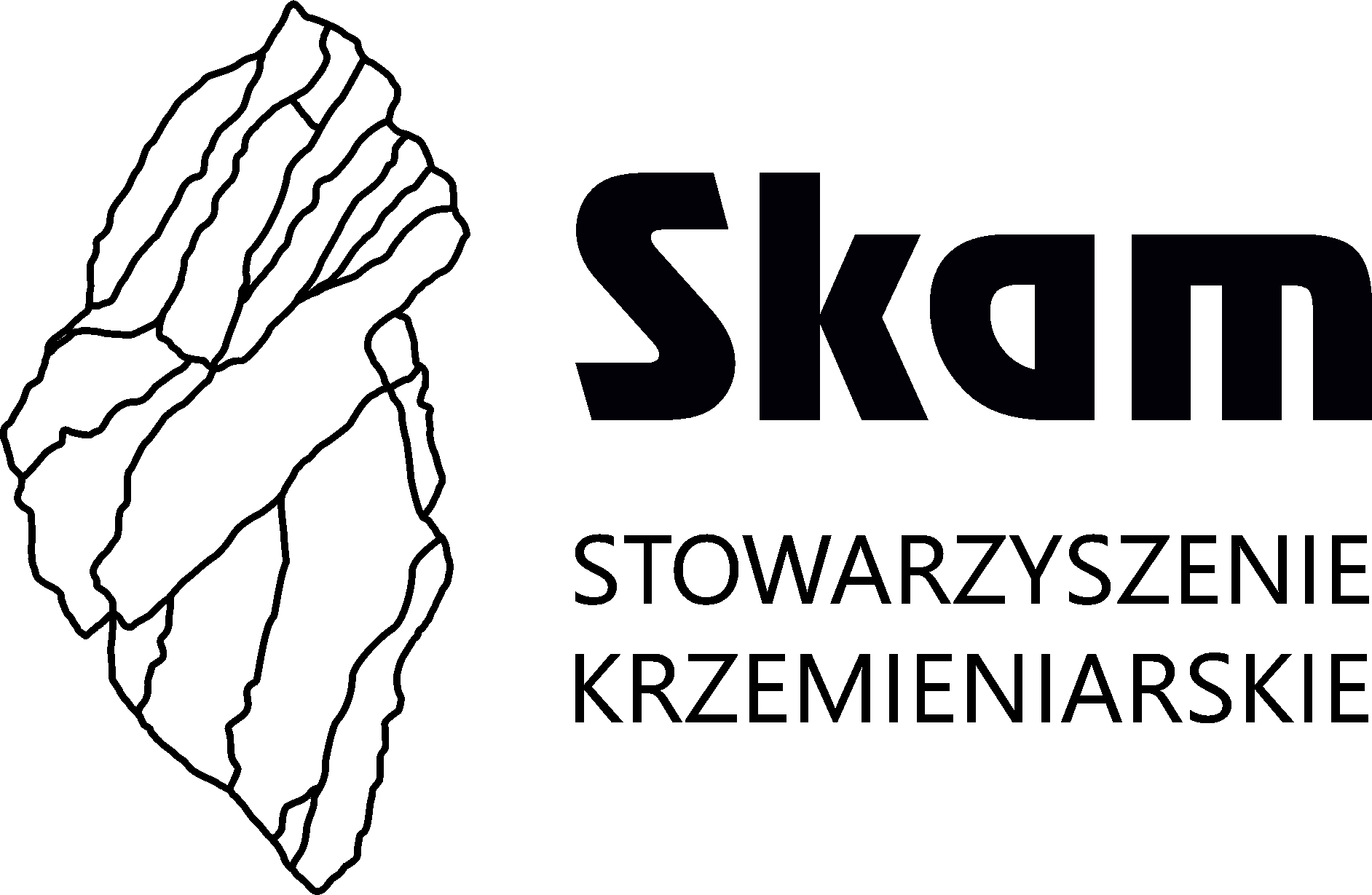
Bronowicki W. Chłoń M. Płonka T.
Forgotten, but not lost – macrolithic tools of Mesolithic hunter and gatherers
17th SKAM Lithic Workshop, „New perspectives in the lithic studies”, 24-26 kwietnia 2024, Krzemionki
Abstrakt
The Mesolithic is most often recognised by the use of microlithic tools, predominantly made of
various types of flint or other siliceous rocks. For this reason, lithic objects, such as axes, adzes,
hoes and maces, are often misinterpreted and dated to later periods, usually the Neolithic. Our
knowledge about these types of macrolithic tools seems to be currently forgotten in the Polish
Mesolithic studies. There is a visible discontinuity of the German research from the period before
WWII in this field of study.
In this paper, we present the examples of the tools in question, named Geröllkeulen (mace-heads),
Spitzhauen (hoes or adzes) and Walzenbeilen (axes/adzes) and their distribution in SW Poland.
The first aim of the study is to associate them to the European horizon of these macrolithic tools,
and describe what is currently known about them in locations, outside of Poland.
In the second part of the paper, we will focus on presenting preliminary results of multifaceted
analyses of selected specimens: mace-heads and an axe/adze from the Museum of Silesian Piast
in Brzeg, and from the City Museum in Wrocław. The research procedure included archival query,
typo-morphological and use-wear analysis, and experimental tests. In the study we focus on the
manufacturing process, the type of activities they were used for, and possible function.
This study is part of a project supported by the National Science Centre, Poland
(2020/38/E/HS3/00285).
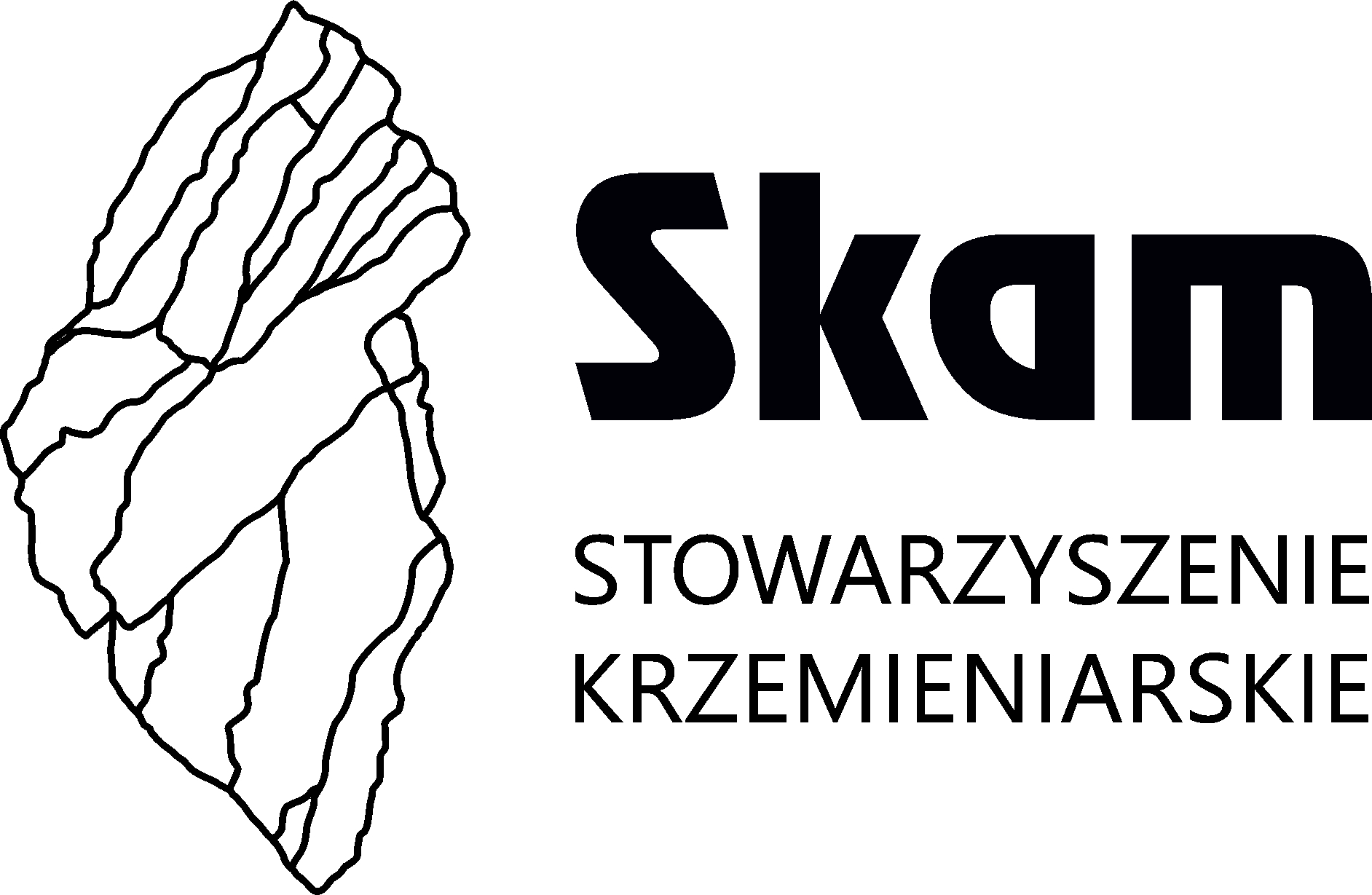
Chłoń M. Kufel-Diakowska B. Borowski M. Bronowicki W. Czarnik M.
For how long did it last? Use and recycling of metabasite tools of the Linear Pottery culture in southwestern Poland
17th SKAM Lithic Workshop, „New perspectives in the lithic studies”, 24-26 kwietnia 2024, Krzemionki
Abstrakt
The first farmers who reached the areas north of the Sudety Mountains are associated with the
Linear Pottery culture (LBK). Over time, some components of the LBK material culture have
changed while others have remained the same. The spread of metabasite tools can be considered
an example of macrolithic tools being part of a Neolithic package. Various types of stone tools are
found at the LBK settlements located at a distance from the metabasite outcrops in the Jizera
Mountains (Bohemian Massif). This behaviour can be described as conservative, especially
considering good access to various local rocks and erratic resources. In our research, we would
like to focus on the human behaviour behind the prolonged use-life of tools.
For this study, we selected a collection of metabasite objects from Lower Silesia and Opole
Voivodeship, SW Poland. The collection (n = 93) includes findings from several excavated LBK
settlements (Skoroszowice 1), multicultural sites (Kostomłoty 27, Stracho w 2/2a, Strzelin 16, 19
Jordano w S ląski 5, Stary Zamek 2), stray finds (Malerzowice Małe 2, Pieszyce 17, Ligota Wielka 9),
and tools found in younger cultural contexts (e.g. Zarzyca 6, Miłosławice 6, Raczyce 3).
Identification of production methods, stages of utilization, and re-use of the metabasite objects
were based on use-wear analysis. Our research was accompanied by an experimental program
that provided the reference collection and allowed us to answer questions that arose during the
research.
Studies are supported by the National Science Centre (NCN), Poland, decision No:
2020/38/E/HS3/00285.
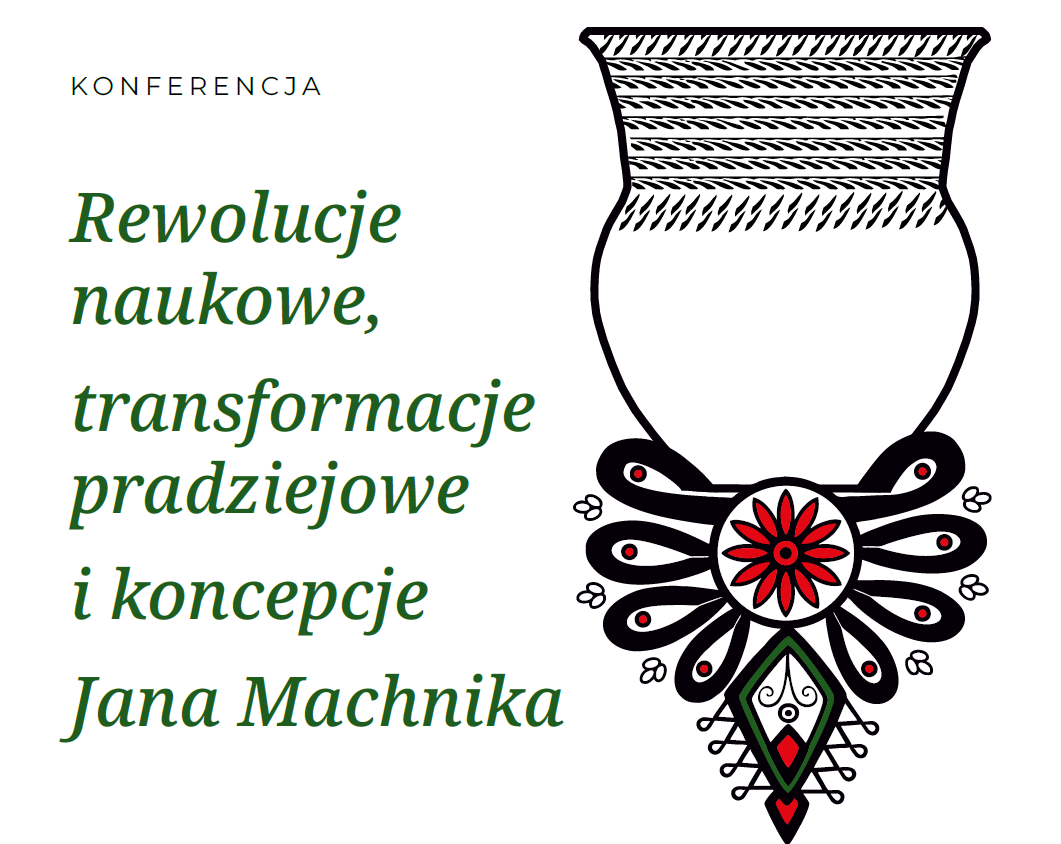
Bronowicki W. Chłoń M. Kobyłka A.
Historie zapisane w kamieniu – ornamentowane topory kultury ceramiki sznurowej w południowo-zachodniej Polsce
Konferencja poświęcona osobie profesora Jana Machnika, „Rewolucje naukowe, transformacje pradziejowe i koncepcje Jana Machnika”, 24-25 czerwca 2024, Kraków

Kufel-Diakowska B. Chłoń M. Gawron-Szymczyk A.
Narzędzia kamienne do rozcierania, szlifowania i rozbijania we wczesnym neolicie w środkowym dorzeczu Odry – studium technologiczne i morfo-funkcjonalne
Konferencja poświęcona osobie profesora Jana Machnika, „Rewolucje naukowe, transformacje pradziejowe i koncepcje Jana Machnika”, 24-25 czerwca 2024, Kraków
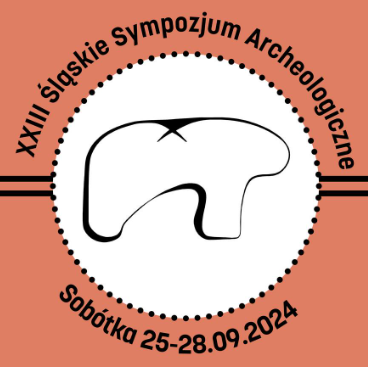
Bronowicki W. Chłoń M. Jarysz K. Radosław K.
Buławy kamienne w pradziejach Dolnego Śląska. Problem przynależności kulturowej, wytwarzania i funkcji
XXIII Śląskie Sympozjum Archeologiczne, 25-28 września 2024, Sobótka
Abstrakt
Makrolityczne narzędzia kamienne, najczęściej kojarzone z okresem neolitu, stanowiły przedmiot badań wielu opracowań materiałowych, typologicznych i specjalistycznych. Prace te skupiały się głównie na narzędziach z ostrzami, takimi jak topory, siekiery i inne (m.in. Glob 1945; Machnik 1966; Roy 2022; Zápotocký 1989), a także na przedmiotach służących do obróbki surowców organicznych i mineralnych, takich jak żarna i rozcieracze (m.in. Hamon 2022; Bofill et al. 2020). Mniejszym zainteresowaniem cieszyły się do tej pory buławy kamienne, oprócz form identyfikowanych z epoką brązu, buławy uważane są za mało zróżnicowane, nie nadające się do wyznaczania chronologii przedmioty. W niniejszym wystąpieniu przedstawimy wyniki badań nad tymi formami, pochodzącymi z Muzeum Archeologicznego we Wrocławiu oraz z Muzeum Piastów Śląskich w Brzegu. Zaprezentujemy wyniki kwerend archiwalnych i muzealnych, które pozwoliły nam na ustalenie miejsc występowania różnych form buław na terenie Dolnego Śląska. Zabytki te poddaliśmy również obserwacjom mikroskopowym i określeniom surowcowym, co pozwoliło nam na wydzielenie ze zbioru, grup narzędzi wykonanych różnymi metodami i technikami, o różnej morfometrii i śladach użytkowych. Wyniki naszych prac, odniesiemy również do badań i ustaleń z innych krajów, które umożliwiły nam wydzielenie grupy buław o prawdopodobnej chronologii mezolitycznej (m.in. Bergsvik, Olsen 2003; Biermann 2010; Drenth, Niekus 2009; Gaffrey 2015). Badania zrealizowano dzięki wsparciu finansowemu Narodowego Centrum Nauki (NCN), Polska (2020/38/E/HS3/00285).

Kufel-Diakowska B. Chłoń M. Gawron-Szymczyk A.
Wczesnoneolityczne techniki przetwarzania zbóż. Przykład dolnośląskiego mikroregionu kultury ceramiki wstęgowej rytej
XXIII Śląskie Sympozjum Archeologiczne, 25-28 września 2024, Sobótka
Abstrakt
Narzędzia kamienne ze skał osadowych, magmowych i metamorficznych stanowiły istotny składnik pakietu neolitycznego, który towarzyszył społecznościom wczesnorolniczym osiedlającym się na terenach na północ od Sudetów i Karpat w 2. połowie VI tysiąclecia p.n.e. Wśród grup społecznych kultury ceramiki wstęgowej rytej (KCWR) dostrzegamy dwie odrębne tendencje w dobrze surowców skalnych do produkcji narzędzi. Motyki/ciosła i siekiery wykonano wyłącznie z bogatego w amfibole metabazytu typu Jizerské Hory, którego odkrywki zlokalizowano niedawno w Sudetach w rejonie Masywu Czeskiego (Přichystal 2013; Krystek et al. 2011; Borowski 2019; Janak et al. 2021). Natomiast na żarna i rozcieracze, a także płyty szlifierskie wybierano skały dostępne lokalnie w szerokiej ofercie surowcowej Dolnego Śląska, w tym surowce eratyczne pochodzenia fennoskandzkiego (Cholewa 2004; Borowski 2019). W naszym wystąpieniu skupimy się na metodach produkcji i użytkowania drugiej grupy narzędzi, klasyfikowanych dotychczas na podstawie wyróżników morfologicznych i obecności powierzchni wskazujących na ich zużycie. W rezultacie obraz technik przetwarzania zbóż u progu gospodarki wczesnorolniczej w tej części Europy środkowej był mocno zubożony i w pewnej mierze odmienny od znanego z południowych centrów KCWR. Analizowana przez nas kolekcja składa się z 80 przedmiotów kamiennych odkrytych na stanowiskach KCWR w południowo-zachodniej Polsce w obrębie dolnośląskiego mikroregionu osadniczego. Osiedla, z których pochodzą zabytki – Skoroszowice 1, Strzelin 16 i Strachów 2/2a – znajdują się na terenie powiatu strzelińskiego i były badane wykopaliskowo przeszło 30 lat temu (Wojciechowski 1981; Wojciechowski and Cholewa 1995; Kulczycka-Leciejowiczowa 1997). Posługując się bardziej rozbudowanymi systemami klasyfikacyjnymi (Hamon 2008; Peacock 2013), biorącymi pod uwagę wymóg funkcjonowania par obiektów, pogrupowaliśmy zabytki w kilka kategorii morfo-funkcjonalnych: pasywne żarna i płyty szlifierskie, aktywne płaskie rozcieracze, rozcieracze sferyczne, kamienie szlifierskie żłobkowe i gładziki. Wykorzystaliśmy do tego celu złożony zestaw metod, w tym, prócz charakterystyki morfometrycznej, analizę śladów zużycia i mikrorezyduów (zob. Hayes et al. 2018; Hamon et al. 2021; Chondrou et al. 2022; Stroulia et al. 2022; Dobreuil et al. 2023, cytując tylko niektórych). Obserwacje mikroskopowe oparliśmy na modelach referencyjnych uzyskanych podczas prac eksperymentalnych. W doświadczeniach użyliśmy skał i eratyków z rejonu Dolnego Śląska. Nasze obserwacje wykazały, że metody produkcji narzędzi kamiennych wykorzystywanych do przetwarzania, w tym rozcierania i rozbijania produktów organicznych, a także mineralnych oraz szlifowania (i naprawiania) innych przedmiotów ze skał oraz techniki przetwórcze, w tym urządzenia do mielenia zbóż na obszarach na północ od Sudetów są zgodne ze schematami zaobserwowanymi w południowych centrach i północno-zachodnich rejonach osadnictwa KCWR. Świadczy to o podobnych tradycjach technologicznych pierwszych rolników i wzorcach adaptacji do lokalnych środowisk oraz potwierdza tezę o homogeniczności kultury ceramiki wstęgowej rytej w zakresie wszelkich komponentów kulturowych, mimo szerokiej dyspersji przestrzennej tej jednostki (Modermann 1988; Bogucki 1995; 1996; Furmanek et al. 2019). Badania zrealizowano dzięki wsparciu finansowemu Narodowego Centrum Nauki (NCN), Polska (2020/38/E/HS3/00285).

Czarnik M. Chłoń M. Kufel-Diakowska B.
Przedmioty kamienne ze stanowiska nr 6 w Zarzycy, pow. strzeliński – nowe spojrzenie na technologię i użytkowanie
XXIII Śląskie Sympozjum Archeologiczne, 25-28 września 2024, Sobótka
Abstrakt
Wraz z pojawieniem się na Dolnym Śląsku osadnictwa zawiązanego z kulturą lendzielską między 2 poł. V tysiąclecia BC i początkiem IV tysiąclecia BC (Furmanek et al. 2019a; Furmanek et al. 2019b), zmiennie uległy niektóre aspekty życia społeczności neolitycznych. Nowe wzorce kulturowe przejawiały się między innymi w produkcji narzędzi kamiennych. W tym czasie, w asortymencie wytworów kamiennych pojawiły się nowe formy narzędzi takie jak topory z przewierconymi otworami. Zmiany widoczne są również w proweniencji skał wykorzystywanych w procesie produkcji. W kwestii surowca, poprzedzający okres zasiedlenia południowo-zachodnich terenów Polski przez kultury wczesnowstęgowe, w tym kultury ceramiki wstęgowej rytej określić można mianem jednolitości. Polegała ona na wykorzystaniu wyłącznie skał sprowadzanych do produkcji narzędzi kamiennych z ostrzem. Kluczową rolę w procesie odgrywały metabazyty z Gór Izerskich (Borowski et al. w druku; Furmanek et al. 2019b). Przemiany związane z pojawieniem się ugrupowań postlinearnych manifestowały się wykorzystaniem skał dostępnych lokalnie oraz zróżnicowaniu użytkowanych surowców. Jednym z rodzajów skał wykorzystywanych do produkcji narzędzi kamiennych był serpentynit. Przedmiotem naszych badań są zabytki kamienne ze stanowiska Zarzyca 6 w pow. strzelińskim. Znajdująca się w tym miejscu osada kultury lendzielskiej badana była w latach 80. XX wieku oraz na początku nowego millenium (Prus 1982, 1990; Czarniak 2009, 2012). W interesującym nas zbiorze wytworów kamiennych (n = 235) znajdują się zarówno kompletne narzędzia, formy uszkodzone i naprawiane, półwytwory oraz odpady pochodzące z etapu produkcji oraz zabiegów naprawy. Dotychczas zabytki ze stanowiska Zarzyca 6 nie były przedmiotem pogłębionych studiów. Celem naszych badań jest rozpoznanie technik wykorzystywanych podczas produkcji i naprawy narzędzi kamiennych oraz określenie sekwencji wykonywanych czynności. Kolejnym wątkiem poruszanym w naszej pracy jest funkcja jaką pełniły narzędzia kamienne. Aby osiągnąć postawiony cel badawczy posłużyliśmy się kompleksowym podejściem złożonym z szeregu specjalistycznych analiz, w tym morfometrycznych, petrograficznych, obserwacji mikroskopowych oraz prac eksperymentalnych. Badania zrealizowano dzięki wsparciu finansowemu Narodowego Centrum Nauki (NCN), Polska (2020/38/E/HS3/00285).

Bronowicki W. Chłoń M. Kobyłka A. Płonka T.
Broń, narzędzie czy symbol? Ornamentowane topory kultury ceramiki sznurowej w południowo-zachodniej Polsce
XXIII Śląskie Sympozjum Archeologiczne, 25-28 września 2024, Sobótka
Abstrakt
Ludność reprezentująca kulturę ceramiki sznurowej (KCSz) nie pozostawiła po sobie wielu trwalszych śladów osadnictwa. Świadectwem jej występowania na terenie południowej Polski są głównie groby i luźne znaleziska, co związane jest w dużej mierze z koczowniczym trybem życia tej społeczności (Furmanek et al. 2019; Włodarczak 2006). Jednymi z najbardziej charakterystycznych przedmiotów związanych z KCSz są kamienne topory. Ich łatwo rozpoznawalna forma, przyciągająca uwagę znalazców, uchroniła je od zapomnienia. Większa część znanych nam toporów pochodzi z przypadkowych odkryć, przekazanych do muzeów na przestrzeni stuleci. Wśród nich znajdują się nieliczne przedmioty wyróżniające się formą opracowania powierzchni w postaci ornamentów rytych, przypominających oplatający narzędzie sznur. W niniejszym wystąpieniu skupimy się na tej kategorii zabytków, przedstawimy zebrane przez nas informacje o poszczególnych egzemplarzach, zarówno archiwalnych, jak i dostępnych fizycznie. Zaprezentujemy także wyniki przeprowadzonych przez nas badań skupionych na sposobie produkcji i użytkowania tych przedmiotów, proweniencji surowca, z którego zostały wykonane, a także ich miejsca i znaczenia w społecznościach kultury ceramiki sznurowej. Badania zrealizowano dzięki wsparciu finansowemu Narodowego Centrum Nauki (NCN), Polska (2020/38/E/HS3/00285).

Kufel-Diakowska B. Chłoń M. Czarnik M. Borowski M. Bronowicki W.
Organisation of stone axe production, usage and recycling by the post-linear communities in Central Europe
5th Meeting of the Association for Ground Stone Tools Research: “Worlds of Stone: interdisciplinary approaches οf ground stone technologies”, 15-20 września 2024, Saloniki
Abstrakt
The post-linear communities associated with the Lengyel tradition developed in the northern part of Central Europe during the second half of the 5th millennium BC. Changes in cultural patterns encompassed lithic production, as evidenced by the emergence of new types of stone tools, primarily shaft-hole axes and greater diversity in raw material selection. Unlike the Linear Pottery culture, which was characterized by the uniform use of Jizera Mountains-type metabasite, post-linear groups utilized a wide range of locally available and imported rocks.
Sites in Zarzyca 6 and Księginice Wielkie 29 belong to the Lengyel culture settlements in southwestern Poland with the most numerous and diverse stone tool inventories. These include complete and repaired shaft-hole axes, abundant damaged implements, modified objects and waste products. Serpentinite was the dominant raw material used for the production of shaft-hole axes. Easily accessible outcrops of this rock are located in the Sudetic Foreland, with the nearest locations 10–15 km away from the sites, in Gogołów-Jordanów Massif and the Szklary Massif. Due to the relatively numerous drill cores and the presence of axe preforms, these sites were published in the literature as specialized workshops.
Our research aimed to identify the techniques used in the production and repair of these tools, focusing particularly on the sequences of actions, and to determine the function of axes and their heavily modified and reduced forms. We used integrative methods, including morphometric, petrographic, technological, and use-wear analyses supported by experimental studies using serpentinite and replicas of drills. By concentrating on the life cycle of shaft-hole axes, our studies revealed a greater complexity of technological behaviours associated with the use of serpentinite products. The results of our research have contributed to a shift in the understanding of the organization of production and the use of serpentinite tools.

Bronowicki W. Chłoń M. Kufel-Diakowska B. Czarnik M.
The perforation process employed in the production of shaft-hole axes by Neolithic and Eneolithic communities in Central Europe
5th Meeting of the Association for Ground Stone Tools Research: “Worlds of Stone: interdisciplinary approaches οf ground stone technologies”, 15-20 września 2024, Saloniki
Abstrakt
Hafting is an important aspect of prehistoric technology, as it allows for the use of composite tools with greater force, increasing efficiency and precision in work. There are many diverse methods of hafting stone tools, known from archaeological finds and ethnographic examples. The choice of hafting method was dictated by the tool’s function, with each selected method having its own advantages and disadvantages. This issue also applies to macrolithic tools used by Neolithic communities, particularly tools with a cutting edge.
In Central Europe, the innovation in the form of shaft-hole axes spread in the second half of the 5th millennium BC with post-Linear groups. From this point onwards various forms of shaft-hole axes and battle-axes were used by different Eneolithic communities. The perforations are considered and widely accepted to be made by the drilling technique, but specific information about the variability of actions and the equipment used in this process is still scarce.
Our research aimed to identify the techniques, devices, and implements used in this specific stage of the technological process. We used integrative methods, including morphometric, technological, and use-wear analyses, supported by experimental studies. The subject of our research was a collection of tools with stone axes and waste products from the Neolithic and the Eneolithic in southwestern Poland. The results of our research have demonstrated the complexity of the technological process and the skill of macrolithic tool makers in solving production challenges.
